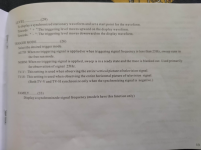Hugo Holden
Veteran Member
Desperado has an admirable quality......"never give up" Who cares if it is the longest thread in history. I never give up, until the fault is found and fixed.
Of course for the experienced with hardware, the process is shortened. But despite that, even for seasoned fault finding experts, sooner or later a fault comes along that can push the skills to the limit and you wonder; "will it ever be fixed ?". The answer is yes it will be, whether a day , a week a month a year. you will get there if you never give up.
And as Daver2 quite rightly points out, when you find what is wrong, you might kick yourself.
There is an imaginary microscope that works on the principle of hindsight, it is called the "Retrospectoscope". With this tool you look back after you find the correct diagnosis (or cause of a fault) and think; it was all so obvious from the beginning. It is a shame such a tool does not exist in reality and is an abstraction to entertain the mind.
Of course for the experienced with hardware, the process is shortened. But despite that, even for seasoned fault finding experts, sooner or later a fault comes along that can push the skills to the limit and you wonder; "will it ever be fixed ?". The answer is yes it will be, whether a day , a week a month a year. you will get there if you never give up.
And as Daver2 quite rightly points out, when you find what is wrong, you might kick yourself.
There is an imaginary microscope that works on the principle of hindsight, it is called the "Retrospectoscope". With this tool you look back after you find the correct diagnosis (or cause of a fault) and think; it was all so obvious from the beginning. It is a shame such a tool does not exist in reality and is an abstraction to entertain the mind.

